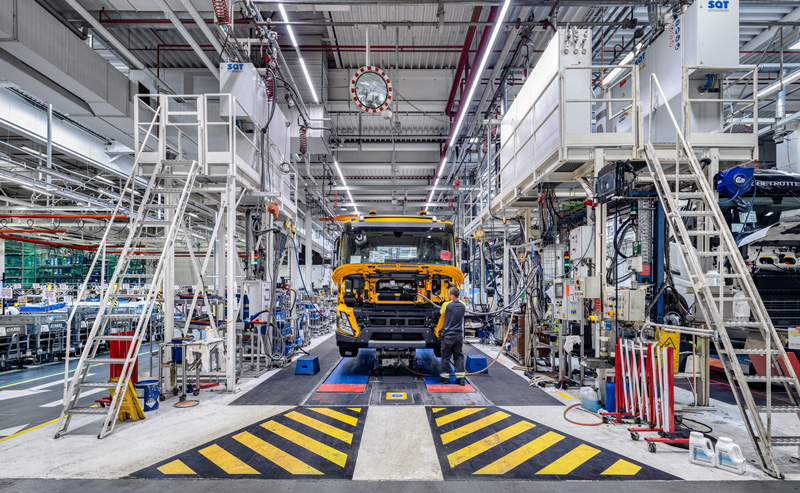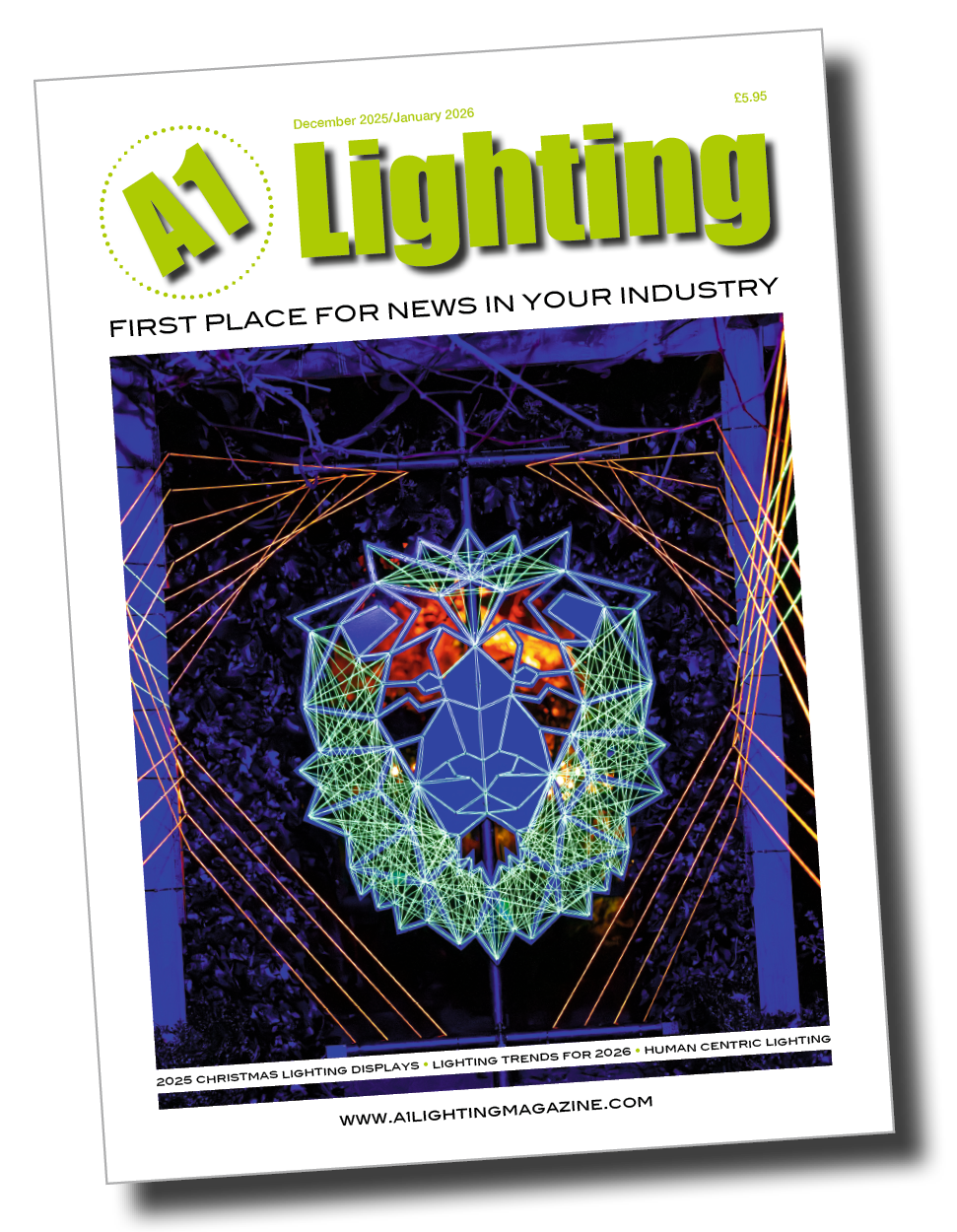
The optimal working conditions at Volvo Group Trucks also include lighting aimed at supporting and improving workplace wellbeing. In a joint field study with Zumtobel and several research institutes, Volvo Group Trucks Belgium researched the importance of human centric light by comparing three different lighting scenarios at its factory premises in Ghent. Convinced by the positive effects of a human-centric approach to lighting, the company subsequently installed a tunableWhite lighting system from Zumtobel. The project also impressed the jury of the DALI Lighting Awards 2023, who honoured the use of DALI technologies to improve the wellbeing of employees with the DALI Award in the ‘Industrial’ category.
The biological and emotional effects of light are frequently underestimated. For example, there is hardly any reliable data on the positive effects of human centric lighting (HCL) in an industrial environment. There is also a lack of information on the positive effects of light on the sleep and cognitive performance of industrial shift workers. When Volvo Group Trucks intended to refurbish the outdated T8 lighting system at their production facility in Ghent, they joined forces with Zumtobel and several prestigious research institutes including KU Leuven in Ghent and the Howest University of Applied Sciences in Bruges to research the effects of human-centric lighting on people working on industrial assembly lines.
Comparison of three different lighting scenarios
The aim of the field study was to compare the effects of three different lighting scenarios on the wellbeing of shift workers. To do this, Zumtobel equipped a 150-metre-long production line with its TECTON continuous-row lighting system. The first 50 metres were equipped with TECTON C standard LED luminaires, which were mounted on two light lines directly above the production line. The second 50-metre section was equipped with the same lighting, along with additional tunableWhite luminaires and the LITECOM lighting management system, which made it possible to program the lighting system and to vary the light colours and brightness levels. Changing colour temperatures were used to simulate the natural cycle of daylight, which had a sustained, positive effect on employee wellbeing.
The third section of the production line was illuminated with human centric lighting. To achieve a vertical illuminance of more than 1,000 lux and thus create the effect of melanopic light, Zumtobel installed an additional third light line. This consisted of a special version of TECTON basic with reflectors and produced the HCL effect through its high vertical illuminance, while thanks to their clever placement in the corridor, the HCL luminaires reflected the light back into the production facility. Zumtobel installed a total of around 600 metres of TECTON light line, with RESCLITE luminaires used for the emergency and safety lighting in all three lighting scenarios.
Field study confirms lighting’s central role
The field study itself was conducted in three groups (one for each lighting scenario), each with around 50 participants. Qualitative and quantitative methods were used to accurately measure the differences between the three groups. The study focused on factors such as visual comfort, cognitive function, sleep efficiency, circadian rhythms and physical activity. The results of the field study confirmed previous hypotheses about the relationship between lighting and the cognitive function of industrial shift workers. For example, employees working in HCL were more alert and more focused than the control group. In addition, the former group also demonstrated measurably better sleep efficiency and sleep latency.
Based on the conclusive results of the study and a comprehensive assessment of all three lighting scenarios (standard LED, tunableWhite and HCL), Volvo Group Trucks decided to completely retrofit their Ghent production facility using LED luminaires with tunableWhite. In addition to the positive effects on employee health, other factors such as cost and energy efficiency also played a role in the decision to invest. As part of the rollout, the company has so far equipped more than 100,000 square metres of its facility in Ghent with Zumtobel tunableWhite luminaires including warehouses, offices and shelving, with the retrofitting of further areas also planned.
The results of the study impressed not only Volvo Group Trucks. The analysis of the collected data and the resulting modernisation of the lighting at the Ghent plant also impressed the DALI Alliance: the project received the popular DALI Award in the ‘Industrial’ category at the DALI Lighting Awards 2023. The jury praised the use of DALI technologies to improve the wellbeing of employees, which was achieved through the implementation of TunableWhite in all production areas.
Employees benefit from support for their circadian rhythms
“Thanks to its use of changing light colours, tunableWhite technology provides optimal support for employees’ circadian rhythms. Employees are alert and active at the right time and able to get the rest they need at the end of their shift. Even if they come home in the daylight, they can still enjoy healthy and restful sleep,” explains Zumtobel project manager, Romanito Van Brabant.
Rudy Van Leeuwen, electrical installations project manager at Volvo Group Trucks Operations in Ghent, adds: “Our company philosophy is focused on people. The aim of the joint project was therefore to create the best light for every activity at every workplace. And our expectations were met: the environment for our shift personnel is significantly better and more pleasant than it was with the original lighting. This has a positive effect on the wellbeing and motivation of our employees and is why Zumtobel tunableWhite is now our go-to technology, which we are also using in our newly opened battery assembly plant for heavy-duty electric trucks in Ghent. In addition, we frequently receive enquiries about our lighting from the Volvo Truck sites in Singapore, Sweden, South Korea and Brazil, and even from our colleagues at Volvo Cars.”













